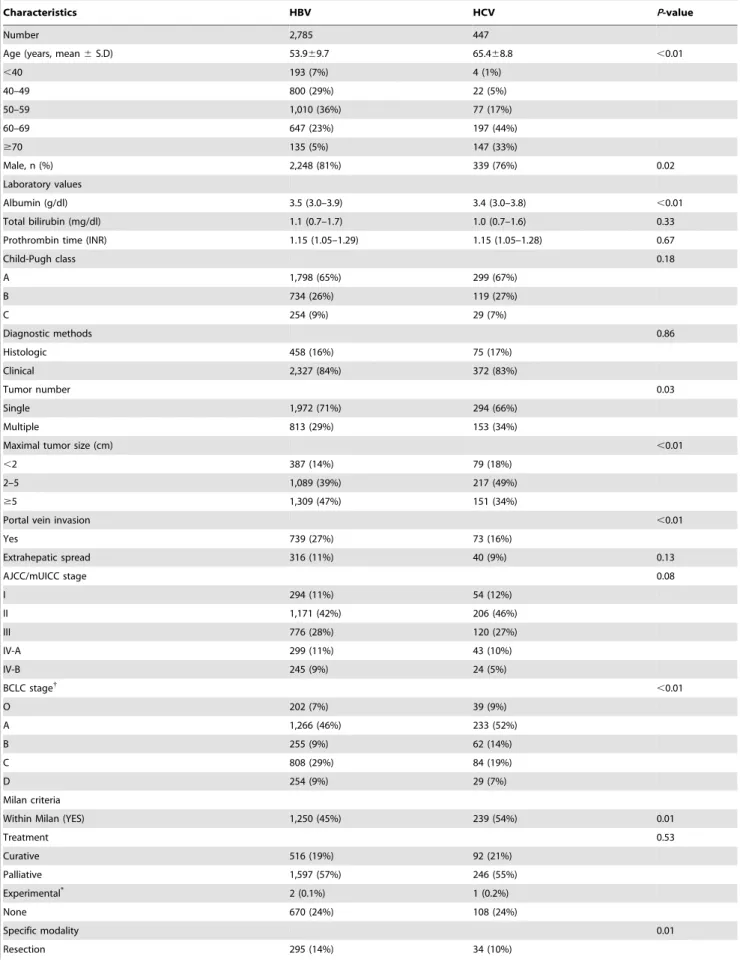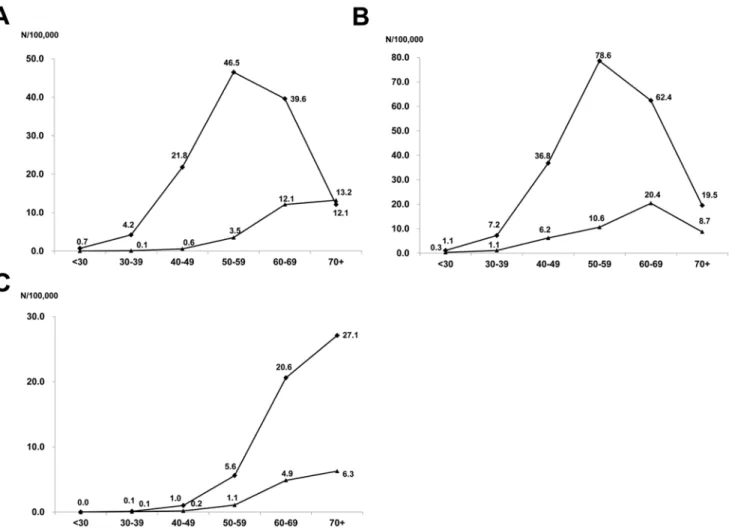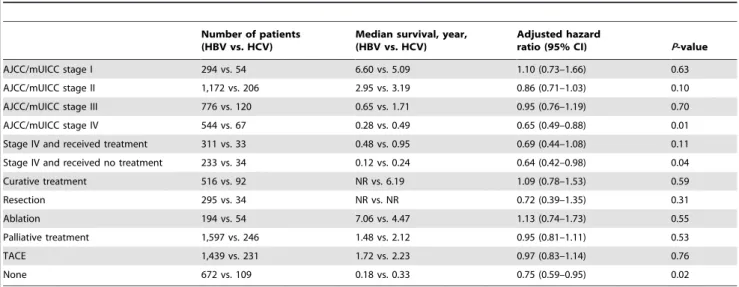Comparison of clinical manifestations and outcomes between hepatitis B virus- and hepatitis C virus-related hepatocellular carcinoma: analysis of a nationwide cohort.
Texto
Imagem



Documentos relacionados
HIV: human immunodefi ciency virus; HCV: hepatitis C virus; HBV: hepatitis B virus; STD: sexually transmitted diseases; HBV+§: Hepatitis B virus active or past infection
This study was carried out to determine the prev- alence of hepatitis B virus (HBV) and hepatitis C virus (HCV) markers among adolescents aged between 10 and 16 years old, who
We investigated the prevalence of hepatitis B virus (HBV) and hepatitis C virus (HCV) serological markers of infection in young adults from the metropolitan region of Florianópolis
Infection with hepatitis C virus (HCV) affects millions of individuals in the world, resulting in chronic liver disease like chronic hepatitis (CH) and hepatocellular carcinoma
The patient has no conditions classically associated with the development of hepatocellular carcinoma (virus infection of hepatitis B and hepatitis C, alcoholism,
A survey was conducted in the hemodialysis population of the state of Tocantins, Brazil, aiming to assess the prevalence of hepatitis B virus (HBV) and hepatitis C virus
Hepatitis B virus genotypes and hepatitis B surface antigen mutations in family contacts of hepatitis B virus infected patients with occult hepatitis B virus infection.
The aim of this study was to estimate the serop- revalence rates of human immunodeficiency vi- rus (HIV), hepatitis B virus (HBV, core antibody), hepatitis C virus (HCV), and